Accessory
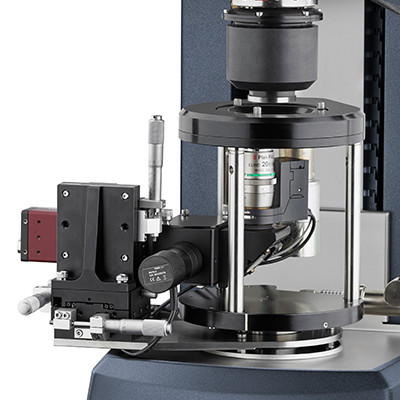
Modular Microscope Accessory (MMA)
The Modular Microscope Accessory (MMA) enables complete flow visualization – including counter-rotation – with simultaneous rheological measurements on a Discovery Hybrid Rheometer. A high-resolution camera collects images at up to 90 fps coupled with industry-standard microscope objectives that provide magnification up to 100×. Illumination from a blue-light LED can be coupled with a cross-polarizer or dichroic splitter for selective illumination or fluorescence microscopy.
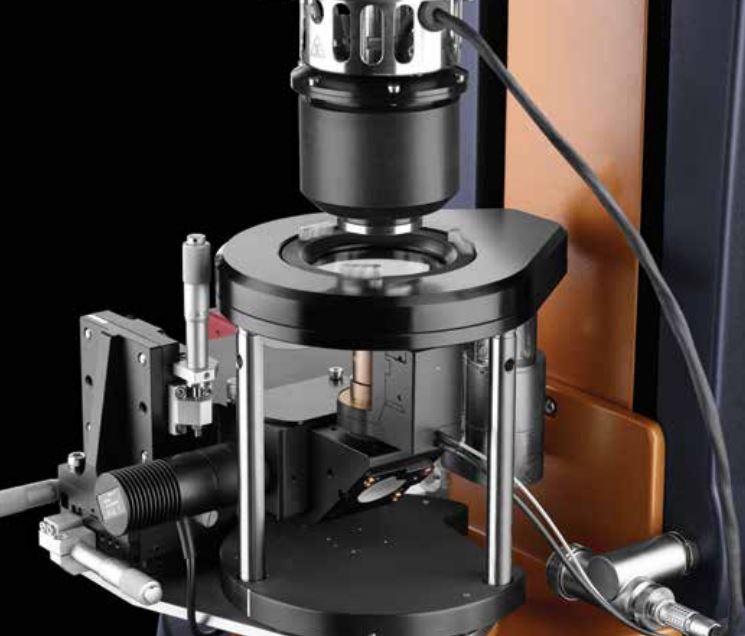 Technology
Technology
The MMA mounts directly to the Discovery Hybrid Rheometer and does not require any additional stands, lifts, or other support. This makes the system simple to install and effectively isolates it from external vibration and other sources of environmental interference that would compromise image quality. A precision x-y-z micrometer positioning system allows the microscope’s field of view to be placed anywhere within the sample. This allows for investigation of flow homogeneity anywhere from the axis of rotation to the sample edge. Precise depth-profiling is enabled by an optional Piezo-scanning system. This precision mechanism permits the depth of the focal plane to be adjusted in software-controlled increments over a 100 µm range for quantitative depth-profiling with steps as small as 0.1 µm. The MMA is compatible with the Upper Peltier Plate (UPP) for temperature control from -20 °C to 100 °C.
Counter-rotation: Stagnation Plane Microscopy
When visualizing materials under flow at high shear rates, features of interest can rapidly move across the field of view, imposing limits on the time available to observe shearinduced changes in the sample. An optional counter-rotation stage available for the MMA rotates the lower glass plate at a constant velocity in a direction opposite to that of the upper plate – this creates a zero-velocity stagnation plane where the fluid is stationary with respect to the camera, allowing a fixed field of view throughout the experiment. The location of this zero-velocity plane within the gap can be controlled by varying the ratio of the upper and lower plate velocities without changing the effective shear rate across the sample. This counter-rotation system is a Smart Swap™ accessory that can be added at any time.
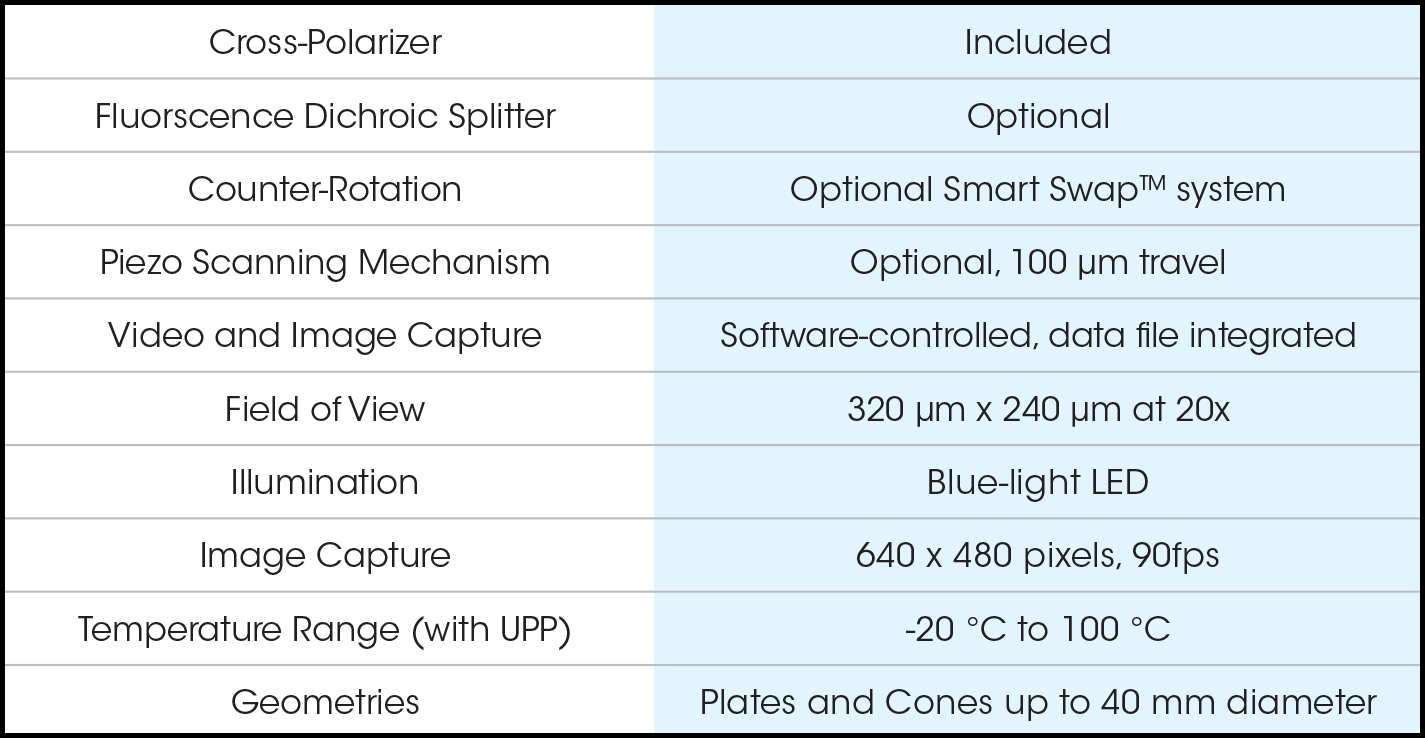
Features and Benefits
- Smart Swap™ technology for quick installation
- Available counter-rotation for stagnation plane imaging on any Discovery Hybrid Rheometer
- High resolution, high frame-rate image collection
- Effective temperature control through Upper Peltier Plate (UPP)
- Direct sample temperature measurement with Active Temperature Control
- Visual access to any position within the measurement area, e.g. center, edge, or mid-radius
- Optional cross-polarization, fluorescence, and precision depth-profiling
- Wide selection of commercially-available objectives
Microscopy
MMA: Cross-Polarization Microscopy
MMA: Cross-Polarization Microscopy
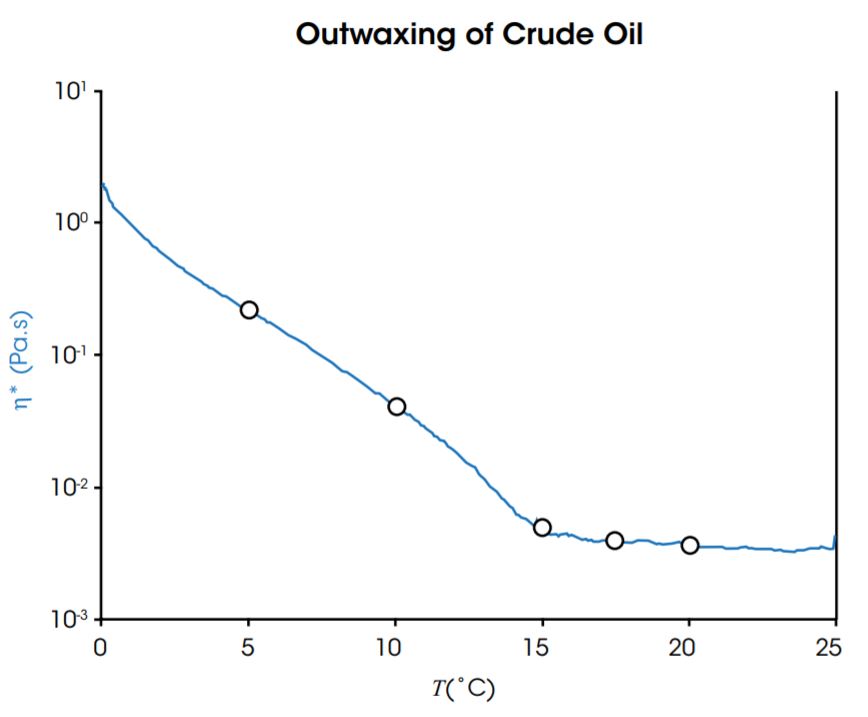
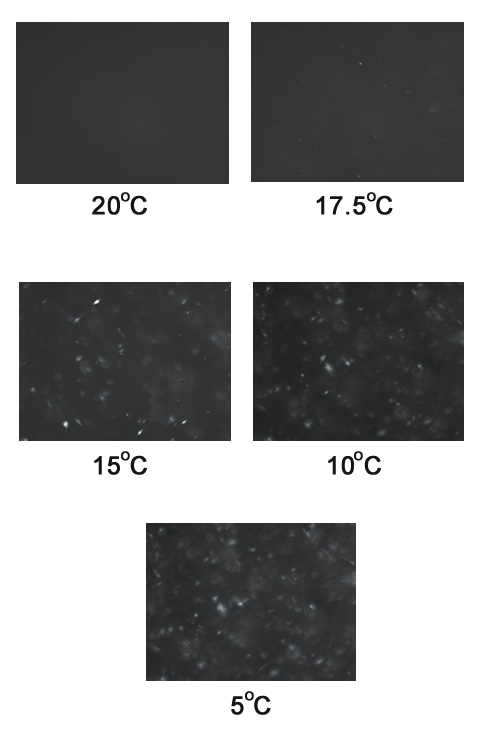
The figures to the right shows an example of cross-polarization microscopy data collected using the Modular Microscope Accessory. A light crude oil sample was cooled from 25 °C to 0 °C at a controlled rate of 1 °C/min during a small amplitude oscillatory test. The images in the inset show cross-polarization micrographs of the sample at various stages during the experiment. At 20 °C, the sample is a homogeneous, low viscosity liquid with no crystalline features. As the sample is cooled, the viscosity rise sharply beginning at 15 °C. This process, known as outwaxing, is caused by the crystallization of long-chain hydrocarbons and paraffinic wax components in the sample and is accompanied by the appearance of several crystalline elements in the micrograph image. With additional cooling, the sample viscosity continues to increase, concurrent with an increase in the number and size of crystalline domains. Simultaneous imaging confirms that the cause of the observed viscosity increase is the onset of crystallization. The results highlight the use of microscopy as a powerful tool to investigate and understand the relationship between sample structure and its material properties.
MMA: Brightfield & Fluorescence Microscopy
MMA: Brightfield & Fluorescence Microscopy
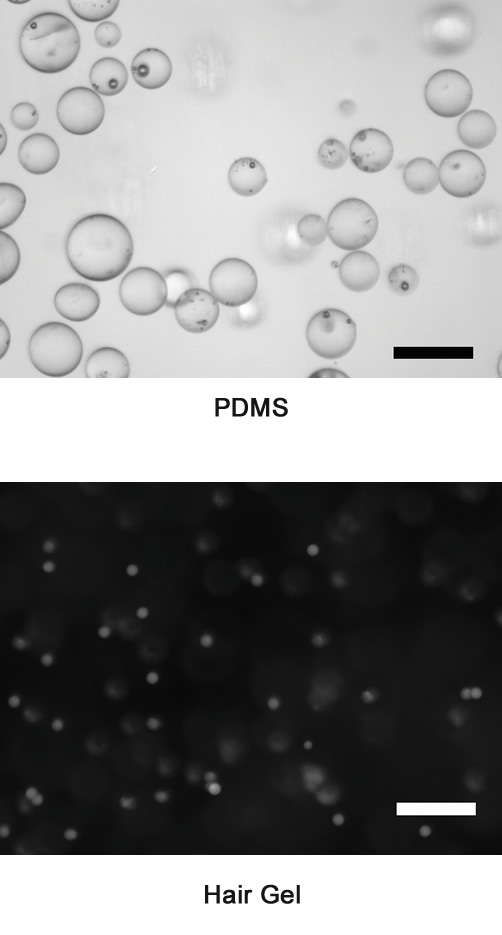
The micrographs below demonstrate the imaging capability of the MMA in brightfield and fluorescence microscopy modes. The images show glass spheres suspended in polydimethylsiloxane (PDMS) in brightfield imaging, and fluorescently dyed polystyrene spheres dispersed in a commercial hair gel sample imaged using the dichroic splitter for fluorescence microscopy. A 20x objective was used to image both samples, scale bar = 50 μm.
Modular Microscope Accessory Videos
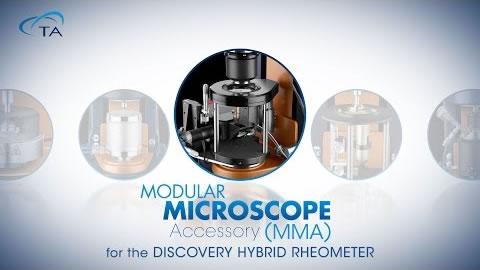 |
||
- Description
-
Modular Microscope Accessory (MMA)
The Modular Microscope Accessory (MMA) enables complete flow visualization – including counter-rotation – with simultaneous rheological measurements on a Discovery Hybrid Rheometer. A high-resolution camera collects images at up to 90 fps coupled with industry-standard microscope objectives that provide magnification up to 100×. Illumination from a blue-light LED can be coupled with a cross-polarizer or dichroic splitter for selective illumination or fluorescence microscopy.
- Technology
-
 Technology
TechnologyThe MMA mounts directly to the Discovery Hybrid Rheometer and does not require any additional stands, lifts, or other support. This makes the system simple to install and effectively isolates it from external vibration and other sources of environmental interference that would compromise image quality. A precision x-y-z micrometer positioning system allows the microscope’s field of view to be placed anywhere within the sample. This allows for investigation of flow homogeneity anywhere from the axis of rotation to the sample edge. Precise depth-profiling is enabled by an optional Piezo-scanning system. This precision mechanism permits the depth of the focal plane to be adjusted in software-controlled increments over a 100 µm range for quantitative depth-profiling with steps as small as 0.1 µm. The MMA is compatible with the Upper Peltier Plate (UPP) for temperature control from -20 °C to 100 °C.
Counter-rotation: Stagnation Plane Microscopy
When visualizing materials under flow at high shear rates, features of interest can rapidly move across the field of view, imposing limits on the time available to observe shearinduced changes in the sample. An optional counter-rotation stage available for the MMA rotates the lower glass plate at a constant velocity in a direction opposite to that of the upper plate – this creates a zero-velocity stagnation plane where the fluid is stationary with respect to the camera, allowing a fixed field of view throughout the experiment. The location of this zero-velocity plane within the gap can be controlled by varying the ratio of the upper and lower plate velocities without changing the effective shear rate across the sample. This counter-rotation system is a Smart Swap™ accessory that can be added at any time.

Features and Benefits
- Smart Swap™ technology for quick installation
- Available counter-rotation for stagnation plane imaging on any Discovery Hybrid Rheometer
- High resolution, high frame-rate image collection
- Effective temperature control through Upper Peltier Plate (UPP)
- Direct sample temperature measurement with Active Temperature Control
- Visual access to any position within the measurement area, e.g. center, edge, or mid-radius
- Optional cross-polarization, fluorescence, and precision depth-profiling
- Wide selection of commercially-available objectives
- Applications
-
Microscopy
MMA: Cross-Polarization Microscopy
MMA: Cross-Polarization Microscopy


The figures to the right shows an example of cross-polarization microscopy data collected using the Modular Microscope Accessory. A light crude oil sample was cooled from 25 °C to 0 °C at a controlled rate of 1 °C/min during a small amplitude oscillatory test. The images in the inset show cross-polarization micrographs of the sample at various stages during the experiment. At 20 °C, the sample is a homogeneous, low viscosity liquid with no crystalline features. As the sample is cooled, the viscosity rise sharply beginning at 15 °C. This process, known as outwaxing, is caused by the crystallization of long-chain hydrocarbons and paraffinic wax components in the sample and is accompanied by the appearance of several crystalline elements in the micrograph image. With additional cooling, the sample viscosity continues to increase, concurrent with an increase in the number and size of crystalline domains. Simultaneous imaging confirms that the cause of the observed viscosity increase is the onset of crystallization. The results highlight the use of microscopy as a powerful tool to investigate and understand the relationship between sample structure and its material properties.
MMA: Brightfield & Fluorescence Microscopy
MMA: Brightfield & Fluorescence Microscopy

The micrographs below demonstrate the imaging capability of the MMA in brightfield and fluorescence microscopy modes. The images show glass spheres suspended in polydimethylsiloxane (PDMS) in brightfield imaging, and fluorescently dyed polystyrene spheres dispersed in a commercial hair gel sample imaged using the dichroic splitter for fluorescence microscopy. A 20x objective was used to image both samples, scale bar = 50 μm.
- Videos
-
Modular Microscope Accessory Videos

Modular Microscope Accessory for the Discovery Hybrid Rheometer.







